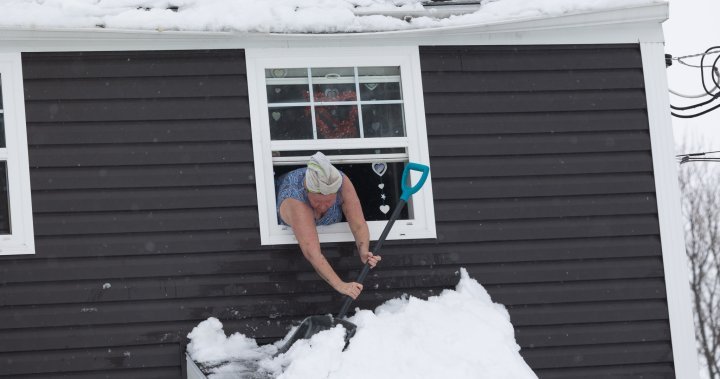Canadians hoping for a more snowy winter this year may be in luck — but where you live may influence how much and how long it will last.
Global News chief meteorologist Anthony Farnell says part of what will drive winter conditions is La Nina.
That flow of warmer water in the Pacific Ocean typically brings lower temperatures and higher precipitation, an opposite to the El Nino weather pattern we saw last winter, which caused higher temperatures from coast to coast.
Farnell cautioned though that while La Nina is expected to play a “big role” globally, its impact may still not be drastic for Canada.
“La Nina hasn’t fully materialized and in fact there are signs that it may never come,” he said Wednesday. “But still, even neutral conditions in the Pacific can lead to a lot colder air for much of Canada, and that generally means more snow.”
According to Farnell, much of British Columbia and Alberta and part of southwestern Saskatchewan and southern Yukon will see below-normal temperatures. The rest of Saskatchewan, most of the Northwest Territories, all of Manitoba and northwestern Ontario are expected to experience near-normal temperatures.
The rest of the country, including nearly all of Nunavut, is expected to see above-normal temperatures.
A weather forecast map shows what Canadians can expect in terms of temperatures across the country this winter.
Anthony Farnell/Global News
However, Farnell said Canadians who aren’t already experiencing the cold, like those in the Prairies, should anticipate the thermometer showing colder conditions at the end of this month with a “chilly” December ahead.

Get daily National news
Get the day’s top news, political, economic, and current affairs headlines, delivered to your inbox once a day.
In terms of actual precipitation, Farnell said most of Canada can expect near-normal amounts, with some exceptions.
Much of B.C. and Alberta are expected to see above-normal precipitation, along with southwestern Saskatchewan, and central and southwestern Ontario.
This could mean rain on the West Coast, but also some snowstorms for Vancouver, while the Great Lakes could see lake-effect snow followed by some clippers, a system known for bringing snow, cold temperatures and strong winds.
The real question, though, is if it snows, will it stay?
“I think we’re going to get some snow, but we’re also going to get a lot of rain, and that’s something from the Great Lakes into Atlantic Canada (that) we’ve gotten used to,” Farnell said. “Yes, you can get snow, but does it stick around? Does it last for weeks on end? And right now it doesn’t look that way.”
Anthony Farnell/Global News
Though it could be a snowfall followed by melting in Ontario and Quebec, the Maritimes could see snow last a lot longer than last year with colder temperatures settling over the region.
Farnell noted that those in the Prairies saw what was “like a switch” this week when temperatures plummeted and snow hit the ground.
From Alberta to Manitoba, snow covered various parts of the Prairie provinces and Farnell said not to expect that to change for some time.
“I think the snow even that’s out there now has a shot of staying until Christmas,” Farnell said. “This snow, if it’s 10 centimetres deep, it tends to lead to more reflection of the sunlight, colder nights.”
There could still be a mild day here and there, but the snow that’s there could stick around for some time.

After last year saw Canada’s winter tourism industry struggle, with low amounts of snow on the hills and mountains, Farnell added that ski resort towns and areas will be “a lot happier” with what’s in store this winter.
How long the cold sticks around may also depend on blocking, in which the jet stream gets altered, resulting in milder air displaced over the North Pole or nearby, causing the “cold pockets” typically in places up north to move south, creating much colder air over regions like the Great Lakes or Western Canada that wouldn’t normally be there.
“It depends on the province and the winter pattern,” he said.
“It’s tougher and tougher to forecast because of these recent years and we’re just in a milder world. But still, that doesn’t mean winter doesn’t arrive. We live in Canada, after all.”
© 2024 Global News, a division of Corus Entertainment Inc.



